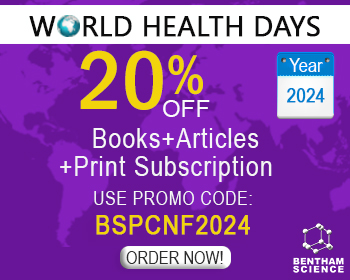Abstract
Background: Even though the battle against one of the deadliest diseases, cancer, has advanced remarkably in the last few decades and the survival rate has improved significantly; the search for an ultimate cure remains a utopia. Nanoinformatics, which is bioinformatics coupled with nanotechnology, endows many novel research opportunities in the preclinical and clinical development of personalized nanosized drug carriers in cancer therapy. Personalized nanomedicines serve as a promising treatment option for cancer owing to their noninvasiveness and their novel approach. Explicitly, the field of personalized medicine is expected to have an enormous impact soon because of its many advantages, namely its versatility to adapt a drug to a cohort of patients.
Objective: The current review explains the application of this newly emerging field called nanoinformatics to the field of precision medicine. This review also recapitulates how nanoinformatics could hasten the development of personalized nanomedicine for cancer, which is undoubtedly the need of the hour.
Conclusion: This approach has been facilitated by a humongous impending field named Nanoinformatics. These breakthroughs and advances have provided insight into the future of personalized medicine. Imperatively, they have been enabling landmark research to merge all advances, creating nanosized particles that contain drugs targeting cell surface receptors and other potent molecules designed to kill cancerous cells. Nanoparticle- based medicine has been developing and has become a center of attention in recent years, focusing primely on proficient delivery systems for various chemotherapy drugs.
Keywords: Personalized medicine, oncogenomics, nanomedicine, nanoinformatics, cancer informatics, bioinformatics.
[http://dx.doi.org/10.1186/1471-2105-13-71] [PMID: 22549015]
[http://dx.doi.org/10.1203/PDR.0b013e3181d6245e] [PMID: 20118825]
[http://dx.doi.org/10.1055/s-0038-1638533]
[http://dx.doi.org/10.1016/j.trecan.2018.04.002]
[http://dx.doi.org/10.1038/s41570-017-0063] [PMID: 31286060]
[http://dx.doi.org/10.1021/acsnano.7b07093] [PMID: 29149552]
[http://dx.doi.org/10.1038/s41563-017-0007-z] [PMID: 29403054]
[http://dx.doi.org/10.1007/978-3-319-43949-5_4]
[http://dx.doi.org/10.1074/mcp.M111.014688]
[http://dx.doi.org/10.1002/pros.22704] [PMID: 23824564]
[http://dx.doi.org/10.1038/bjc.2016.243] [PMID: 27560555]
[http://dx.doi.org/10.1177/0192623308329473] [PMID: 19098118]
[http://dx.doi.org/10.1016/B978-0-12-386932-6.00007-7] [PMID: 23244793]
[http://dx.doi.org/10.1038/nrd1657] [PMID: 15729362]
[http://dx.doi.org/10.1007/s40089-014-0094-7]
[http://dx.doi.org/10.1016/j.bmhimx.2016.10.006] [PMID: 29421286]
[http://dx.doi.org/10.2174/156802611794072641] [PMID: 21320058]
[http://dx.doi.org/10.1021/jm801649y] [PMID: 19507860]
[http://dx.doi.org/10.1016/j.bmcl.2010.10.051] [PMID: 21078555]
[http://dx.doi.org/10.1158/1535-7163.MCT-14-0260] [PMID: 25349306]
[http://dx.doi.org/10.2147/IJN.S24582] [PMID: 22866003]
[PMID: 22942787]
[http://dx.doi.org/10.3390/jpm7040012] [PMID: 29023366]
[http://dx.doi.org/10.1007/978-1-4614-2140-5]
[http://dx.doi.org/10.1016/j.addr.2012.08.005] [PMID: 22917779]
[http://dx.doi.org/10.1200/JCO.2007.14.7116] [PMID: 18316791]
[http://dx.doi.org/10.1200/JCO.2008.19.8168] [PMID: 19124802]
[http://dx.doi.org/10.1200/JCO.2007.12.5906] [PMID: 18202412]
[http://dx.doi.org/10.1016/j.arcmed.2010.08.011] [PMID: 21044746]
[http://dx.doi.org/10.1038/tpj.2010.58] [PMID: 20585341]
[http://dx.doi.org/10.1016/j.eururo.2011.06.020] [PMID: 21715084]
[http://dx.doi.org/10.1002/ijc.25904] [PMID: 21207420]
[http://dx.doi.org/10.1038/jhg.2010.98] [PMID: 20720558]
[http://dx.doi.org/10.3324/haematol.2015.134510] [PMID: 27582569]
[http://dx.doi.org/10.1016/j.apsb.2018.04.005] [PMID: 30109178]
[http://dx.doi.org/10.1016/j.ejca.2009.05.032] [PMID: 19592233]
[http://dx.doi.org/10.1038/nrc2683] [PMID: 19629072]
[http://dx.doi.org/10.1158/1078-0432.CCR-18-0373] [PMID: 29615459]
[http://dx.doi.org/10.1089/cbr.2005.20.648] [PMID: 16398617]
[http://dx.doi.org/10.1089/thy.2009.0417] [PMID: 20615131]
[http://dx.doi.org/10.1136/jcp.2009.064550] [PMID: 19561230]
[PMID: 22327316]
[http://dx.doi.org/10.3390/ijms15057158] [PMID: 24776761]



























